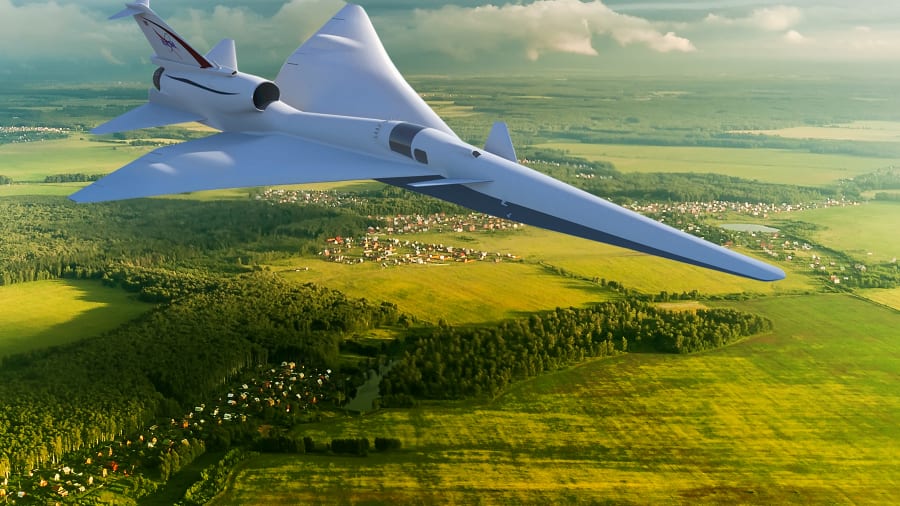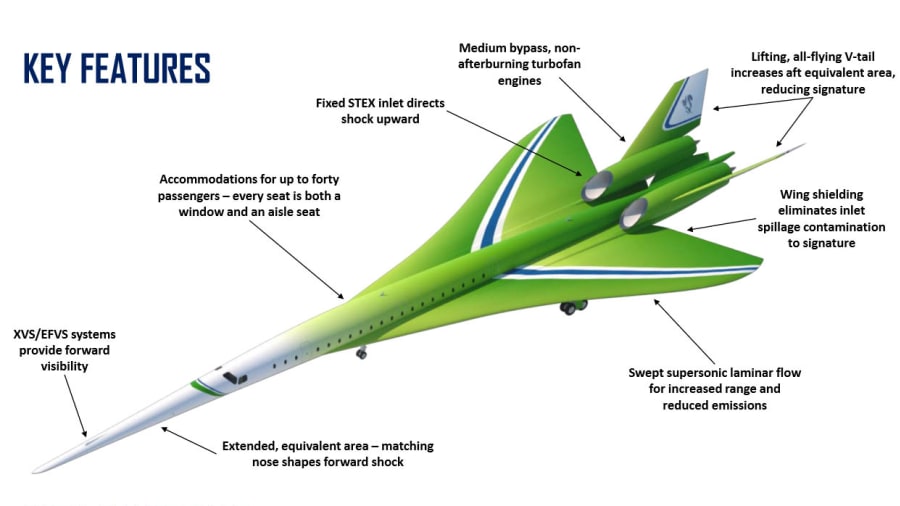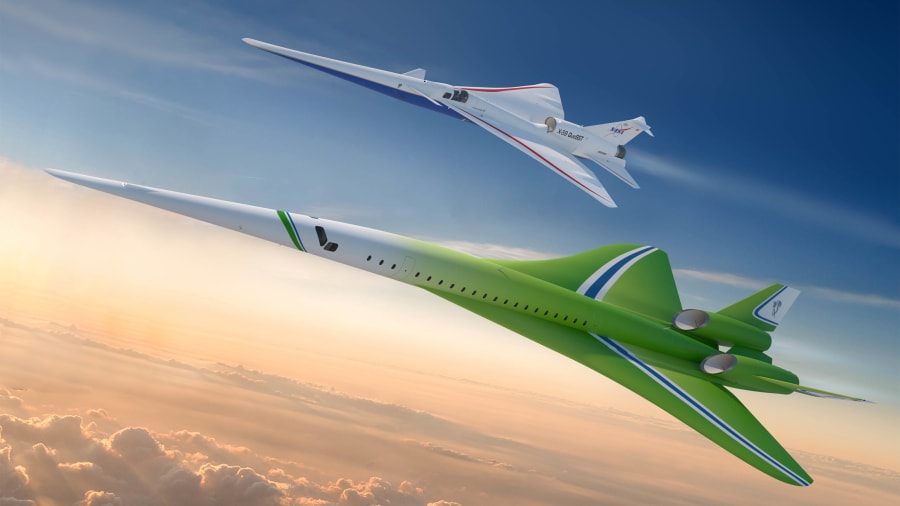It’s still at the conceptual stage, but a new supersonic airplane design unveiled this week by Lockheed Martin Aeronautics could be the clearest indication yet that we’re on the brink of a new golden age of super-fast air travel.
The Quiet Supersonic Technology Airliner, a sleek twin-engined jet plane that will carry up to 40 passengers at speeds of Mach 1.8, was revealed on Wednesday at an American Institute of Aeronautics and Astronautics conference in Dallas.
Though still a ways off being built, the design leverages Lockheed Martin’s work with NASA to create the X-59 Quiet SuperSonic Technology X-plane — a supersonic jet that does not create the intense sonic boom typically associated with aircraft breaching the sound barrier.
The loud noise created by Concorde when it crossed the Mach 1 speed threshold prevented the aircraft from operating over-land routes, greatly reducing its economic viability.
Lockheed Martin says, because there are tests underway on X-59 that could pave the way for a rethinking of regulations that prevent overland supersonic flight, it wanted to be ready with a commercial aircraft that could capitalize on newly opened routes.
But Mike Buonanno, the LM aerospace engineer who briefed AIAA on the concept, says the technology is pretty much in place to go ahead once the concept is proved from NASA’s X-59 program.
“Right now, we’ve only done early conceptual design studies to establish that the design is feasible, do sizing for the concept, how big it should be, how much it should weigh… Those early sensitivity studies to make sure it all makes sense,” he tells CNN Travel.
The QSTA isn’t the only new commercial supersonic passenger jet on the drawing table right now. US startup Boom Supersonic has attracted a $10 million investment from Japan Airlines and reportedly dozens of pre-orders for its envisioned 55-seat jet capable of Mach 2.2.
Yet, with overland supersonic boom restrictions in place, it will take radical design work and a major regulatory shakeup before some of the planet’s most popular air routes are opened up to full faster-than-the-speed-of-sound aviation.

Lockheed Martin’s design is reminiscent of Concorde’s delta-wing design, but instead utilizes an extended super-sharp nose to sculpt sonic shockwaves that will cascade along the aircraft without the explosive bang created by its aeronautical ancestor.
If work on the X-59 successfully transfers across, the noise should be audible from the ground only as a thump similar to a car door being slammed.
While Concorde needed a hydraulic drooping nose to allow its pilots to see properly during landings, QSTA will use a technological solution: forward visibility systems embedded at the front to relay the required visuals to the cockpit.
The cabin is designed to accommodate 40 passengers in a single aisle configuration with one seat either side so that all passengers will have window and aisle access.
“Ultimately airlines determine how they arrange their seats, but we’ve nominally configured the airplane for 40 passengers,” says Buonanno. “We did considerable market research and found that this was the sweet spot for the size of this type of airplane, basically maximizing the number of markets that can be addressed by the airplane.”
At the rear of the airplane, there’s an unusual “flying V-tail” structure that replaces the standard single fin design usually seen on commercial aircraft with twin fin more often associated with fighter jets.
The QSTA’s power comes from two turbofan engines that, unlike Concorde, don’t feature afterburners that inject fuel directly into the engine to drastically ramp up thrust. These will provide the aircraft with 40,000 pounds of thrust at ground level.
The engine needs to be a new design,” says Buonanno. “We did a survey of what existing engines were out there, the conclusion of that survey was, we found, that there were no off-the-shelf engines that we could just drop on and use as-is for the airplane.
Buonanno adds that he’s confident that existing engine concepts could easily be adapted for the QSTA.
“There would be multiple modifications required,” he says. “Really you’d have to put what’s called a new low-pressure spool on the engine, a new fan and a new low-pressure turbine, but you’d be able to repurpose that very high-technology heart of the turbojet engine.”
The aircraft would, according to Lockheed Martin, have a range of about 5,200 nautical miles, easily covering routes such as New York-London, Tokyo-Los Angeles, London-Beijing and Tokyo-Sydney.
Projections indicate the time saving on a London-Tokyo flight of 5,190 miles would be 4 hours 30 minutes.
Buonanno says there’s no current estimations on when the QSTA, if it goes into production, would enter service since any move towards building would rely on the outcome of the X-59 testing program.
But he said there was optimism that the data needed to prompt a change in regulations for overland supersonic flight would be forthcoming.
“Right now the primary focus is to get that data to solve the regulatory challenge,” he says. “The goal is to get that data by 2023, there’s a rule-making cycle that goes on and we’re working towards that goal for supporting that mission.”


